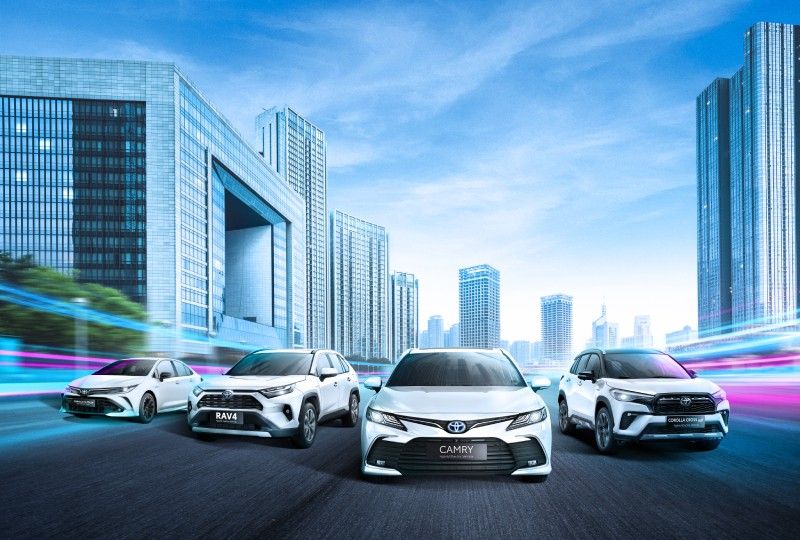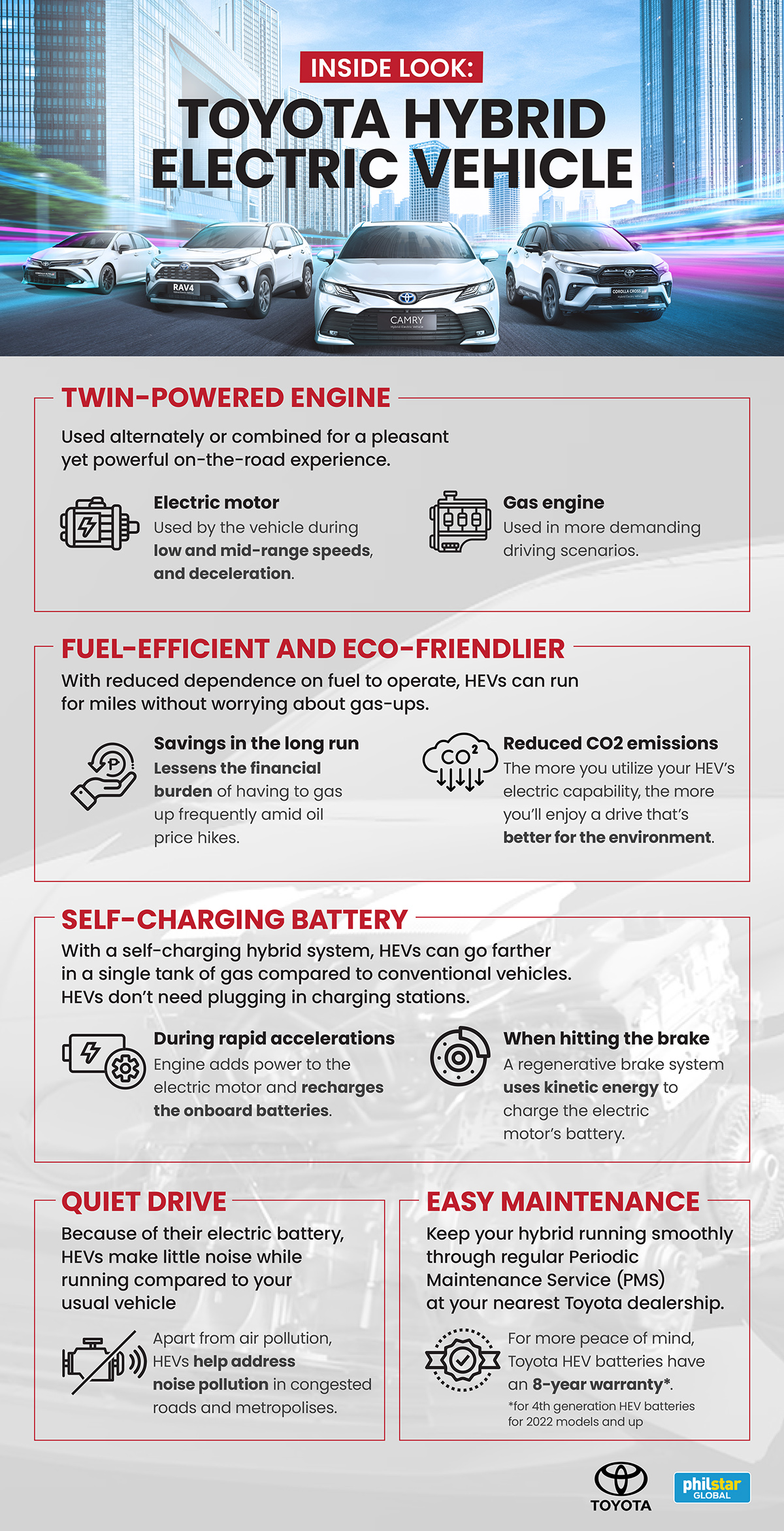What's in a Toyota HEV? Guide to understanding hybrid electrified vehicles

MANILA, Philippines — The recent passage of the Republic Act (RA) 11697, or the "Electric Vehicle Industry Development Act (EVIDA),” sets the stage for commercializing various forms of electrified vehicles in the Philippines — a much-needed development to drive the country toward more sustainable mobility.
RA 11697 comes as good news not only for automakers and sustainable mobility advocates but also for eco-conscious consumers considering shifting to better transport options such as hybrid electrified vehicles (HEVs) due to the numerous advantages they offer.
To name a few, EVIDA’s Implementing Rules and Regulations makes HEV ownership more inviting and rewarding by incentivizing owners with certain tax exemptions. It also offers several non-fiscal perks such as exemption from the coding scheme and priority registration at the Land Transportation Office (LTO).
However, owning an HEV could mean more than just these incentives. Whether you simply want to have a smooth driving experience, or you’re on a bigger mission of making a better impact on the environment, HEVs’ technologies could open numerous possibilities.
Hybrid Electrified Vehicles 101
HEVs are often promoted as an eco-friendly mobility choice. While this is true, the public is yet to fully understand what HEVs are and what they can potentially contribute to our communities.
- HEVs are vehicles that operate with two sources of energy propulsion. Usually, they have a conventional gas engine in combination with one or more electric motors that use energy stored in batteries.
- An HEV can switch between the gas engine and electric motor, or combine both power sources to power the wheel, depending on the driving scenario. This allows HEVs to function alternately on fuel and electricity means they don’t give off as much of the hazardous gases that are creating the greenhouse effect and causing global warming.
- HEVs provide a ready solution so that car owners can start lessening their carbon emissions today. Driving an HEV produces less carbon emissions than the usual vehicle as they consume less gas. This also means they can go farther on a single tank compared to the usual vehicle.
Toyota Motor Philippines (TMP) pioneered the shift toward electrification in the country when it brought the Prius to the Philippines in 2009. Today, TMP offers the widest range of electrified vehicles in the country, namely Toyota's Corolla Altis GR-S HEV, Corolla Cross GR-S HEV, Camry HEV and RAV4 HEV plus Lexus' LS, IS, ES, UX, RX and NX.
But what’s inside these Toyota HEVs and why are they popular choices in the Philippine HEV market? Let’s take a closer look.

Philippines’ journey to greener mobility
The race toward a greener future has never been more important and urgent. Countries across the world have been looking for better, more sustainable alternatives to how we’ve traditionally done things — be it in dining, shopping and now even in the aspect of mobility.
In 2015, Toyota launched the Toyota Environmental Challenge 2050, a company undertaking to go beyond zero environmental impact. The push for the adoption of HEV is part of this mission and has seen great progress ever since.
Globally, Toyota reported having reduced more than 160 million metric tons of CO2 emissions with Toyota and Lexus HEVs. With the growing support for electrified vehicles, the company anticipates that number may rise exponentially in the coming years, contributing to Toyota’s goal of reducing vehicle CO2 emissions by 90% compared to its 2010 levels.
Likewise, in the Philippines, the road to greener mobility has already been paved. Aside from the recent passage of RA 1197, Filipinos are already, and becoming even more, conscious of the environment.
For TMP, this sentiment is where they want to build. According to Assistant Vice President for Marketing Services Elvin Luciano, the shift to various forms of electrified vehicles is rapidly accelerating in the Philippines, with the industry seeing the fastest adoption rates yet since HEVs were introduced in the country.
“This is due to more people becoming aware of the negative impact of CO2 emissions and wanting to do their part to help preserve the environment. With HEVs, people save energy and fuel costs without compromising mobility,” Luciano said.
In the Philippines where infrastructures for fully electric vehicles are yet to be built in different areas, Toyota’s HEVs offer a readily available solution that can make the country take big leaps toward its envisioned greener and more sustainable future.
"The positive impact of electrified vehicles can only be observed once we achieve widescale adoption of these vehicles. The exponential growth and the rate of new electrified vehicle model introductions in the country are providing Filipino customers more options and easier access to greener technologies,” TMP President Atsuhiro Okamoto said.
“We are optimistic that we can experience the environmental benefits of electrified vehicles with Toyota taking the lead while always ensuring ‘Mobility for All’ where “no one is left behind," he concluded. — JAP TOBIAS
- Latest





























